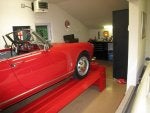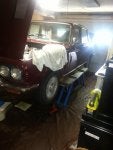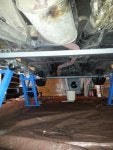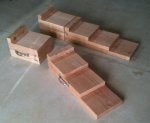I’m not quite ready to go whole-hog and get a 2 or 4 post lift, so this question isn’t about that.
For you guys who haven’t made that ultimate leap for your home garage, how do you lift your Alfa? Right now I have a modest floor jack and some stands (and some ramps I never use) but I don’t see that as a good long-term solution.
Some options that come to my mind:
1. Whole-car scissor lift
2. Floor jack to lift the entire front or rear end, as required
3. Floor jack to lift just one wheel at a time
4. Ramps
5. Bottle jack
6. Grease pit
7. Drive up onto the curb (don’t laugh, I’ve seen it done, but not with an Alfa)
8. Something else (please explain)
9. I never mess around under there
TIA
For you guys who haven’t made that ultimate leap for your home garage, how do you lift your Alfa? Right now I have a modest floor jack and some stands (and some ramps I never use) but I don’t see that as a good long-term solution.
Some options that come to my mind:
1. Whole-car scissor lift
2. Floor jack to lift the entire front or rear end, as required
3. Floor jack to lift just one wheel at a time
4. Ramps
5. Bottle jack
6. Grease pit
7. Drive up onto the curb (don’t laugh, I’ve seen it done, but not with an Alfa)
8. Something else (please explain)
9. I never mess around under there
TIA

















